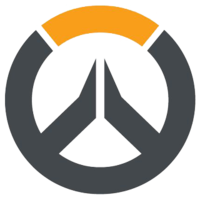Overwatch - a great discussion point for balance
Written on
Overwatch is the current hotness. A highly polished objective-based shooter from Blizzard, with a diverse cast of characters and a few maps and game modes to play on. And it manages to be an interesting example of various balancing acts.
Balance is a weird topic, as there are several different balances that one needs to cover. Overwatch highlights two major areas: fairness and viability.
Competitive fairness of team compositions
From this point of view, the game is perfectly balanced. Teams can choose any character setup they want, there are no load-outs, no out-of-game mutators and no artificial ways to customise your character’s gameplay. Even more, players can swap their character mid-game. This creates a dynamic during games, where a coordinated team can adapt to their opponents and vice versa, with no situation where a team has lost “before the game has begun”.
…everything assuming equal player skill.
This is crucially different from other multiplayer games, such as League of Legends or DotA 2 (in competitive ranked, you can’t pick duplicate champions / heroes or one that has been already chosen by your opponents), Counter Strike (the two factions have access to different weapons) or Magic: the Gathering (different deck selection).
Competitive fairness of objectives
Overwatch has asymmetric maps. Balancing them such that either side has a 50% chance to win will be complicated, especially when attempting to do that at every skill level. Counter Strike solves that by having both teams play both sides of the map. Overwatch will have to keep tabs of their metrics and a close look on what might push one side to have an advantage over the other and make sure it doesn’t ruin the experience.
Why would you want to have 50% win rate? Because you do not want players to lose hope if they see they are playing as the disadvantaged side. While some players might be boldened by the scenario, others will not want to play in such situations. A 50-50 environment will create an arena where skill and ability to take advantage of slight mistakes will eventually win.
Viability
Now this is where balance becomes extremely tricky. Making certain that every character in the game is not only playable, but also not too strong or too weak, is not easy. Humans are highly subjective beings. Many of us like badass heroes, or attractive ones, and will skew our choices in that direction. High level players will, however, prefer what is most likely to win them the game.
Developers must keep an eye out for discrepancies at every skill level. If a hero is not being chosen by anyone, then why have it in the game at all? A waste of development resources. But will a buff be enough to make that hero a worthwhile pick, or will it make them too strong?
There are many resources out there already, trying to understand what is strong and what isn’t, to push those that want to win further. A common occurrence among most hero-based games is having a “tier list”, where each hero is ranked according to how strong or viable they are when attempting to play at the highest level. For Overwatch, these tier lists are already out there. And they don’t always agree with each other.
Problems start to arise when everyone agrees on what is bad. And, if play statistics corroborate those ideas, changes need to be made. And those changes will inevitably bring about a need for an updated tier list. Force makes an interesting point on how developers do balance and, while I don’t agree completely, it is always worth remembering that Blizzard has more information on what everyone plays than the players themselves. Unless they’re not tracking that, but that would not be smart.
But having some heroes not be viable is also a design decision. Bringing them back into viability can be a breath of fresh air for many players, as they will now have reasons to try a different way of playing the game, one they wilfully avoided due to its rumoured relative weakness. Constant flow of changes means an ever enjoyable game (do not quote me on that. It is based purely on anecdotal experience. Research required).
Closing notes
This post did not take in consideration further complications, such as heroes that are very strong in niche scenarios, but weak in the rest. Or that some ultimates (strongest abilities of heroes) might be impacting some hero stats much more than the rest of their kit. Or so many more elements of the game.
This post is an introduction to the idea of multiple avenues of balance in a competitive multiplayer game. My research is looking for ways in which designers can embrace computational intelligence (AI) to make better games, and understanding what needs to be balanced and what does not is crucial to this task.
Also, at the end of the day, remember to enjoy what you’re playing. It’s a game and it’s meant for fun, unless you’re at the highest level. At that point, I wish you the best of luck in finding and abusing the strongest tools the designers left you. But remember, in Overwatch, your opponents have access to the very same tools.
I’d love to know your opinions on this! Agree with me? Disagree with me? Do share your view in the comments below.



